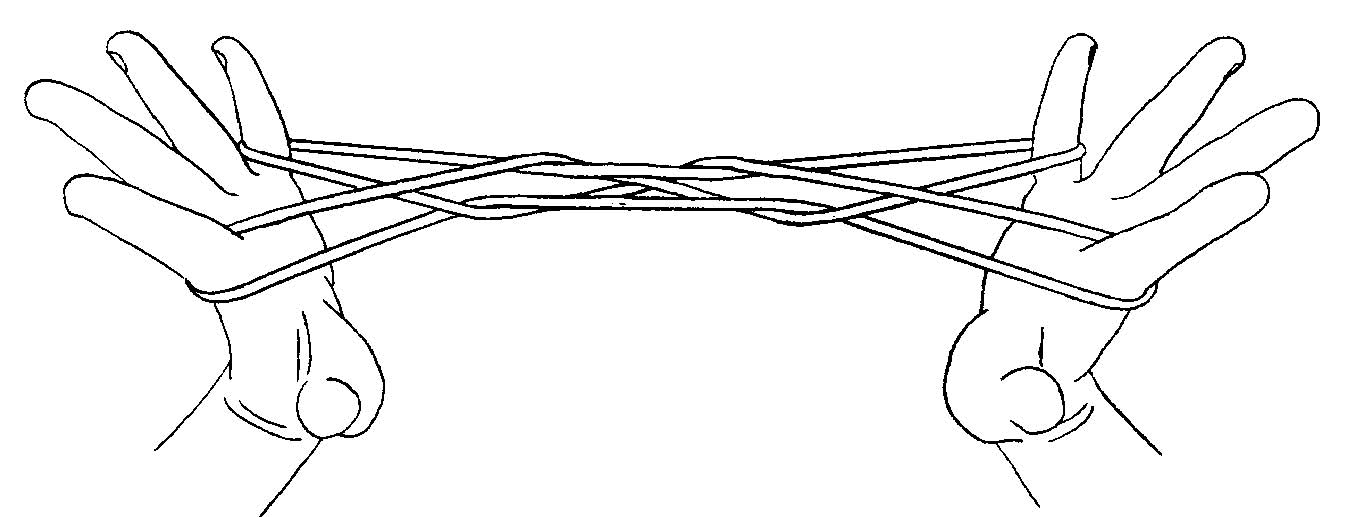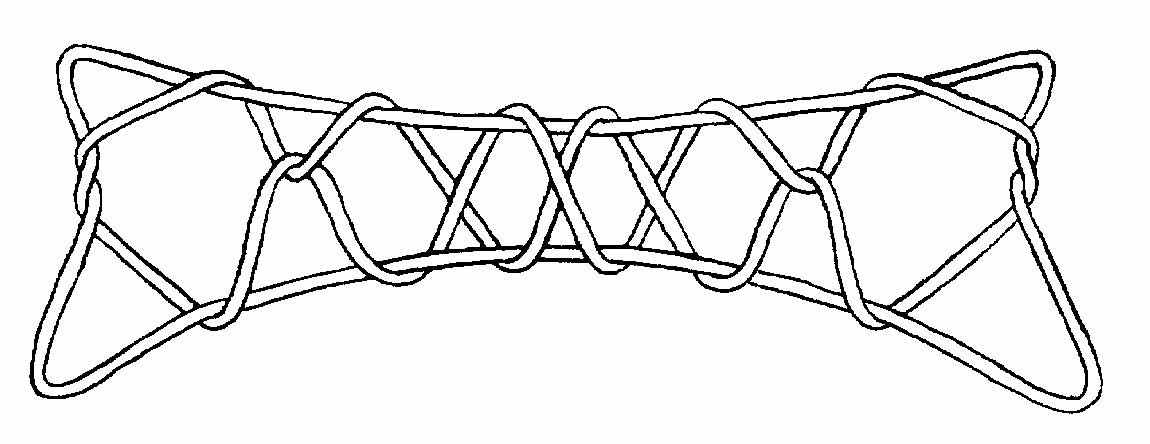Loom Phase
Same as osage two diamonds.
Weaving Phase
Pass the thumbs under all four strings and bring back the far little finger string.
On each hand, reach over the near index string with your thumb, pick up the far index string, and return. Drop the little finger loops.
So far, the method is identical to jacob’s ladder. Now we introduce a modification:
On each hand, with your little finger reach over two strings (the near index string and the far thumb string), then under both of the near thumb strings, and return with the lower near thumb string (a bit awkward, but practice makes perfect). Drop the thumb loops and pull your hands apart.
You have just stored two diamonds. In fact, if you move your hands around a bit you can catch a glimpse of the two embryonic diamonds near the center. If you now complete the weaving and extension phases of osage two diamonds, you get “two plus two” or four diamonds.
storing two diamonds from the viewpoint of the maker
six diamonds
To make six diamonds, store two diamonds, and finish with osage four diamonds (weaving phase plus extension phase). This is the six diamond figure below.
The technique is additive: the number of diamonds is limited only by the length of the string and your ability to extend the final figure without the center collapsing. One can also make six diamonds by storing two diamonds, then storing two diamonds, and then finishing with osage two diamonds (the entire weaving phase plus the extension phase).
An odd number of diamonds is also possible. To make five diamonds, store two diamonds, then finish with three diamonds (weaving phase plus extension phase). Surprisingly, five diamonds are also obtained if one stores two diamonds then finishes with one diamond. The only difference between the two designs is the location of the single internal wrap. To make seven diamonds, store two diamonds twice, then finish with either three diamonds or one diamond.
making five diamonds from viewpoint of the maker
extended discussion for making five diamonds
Many students may find it difficult to extend the figure when a large number of diamonds have been made. That is why I developed the power lift technique. I also learned another way of adding two diamonds when a young rastafarian man flew back to new york with me from Seattle once a long time ago. I call his technique the rastafarian addition. The next page of instructions explain these techniques.


